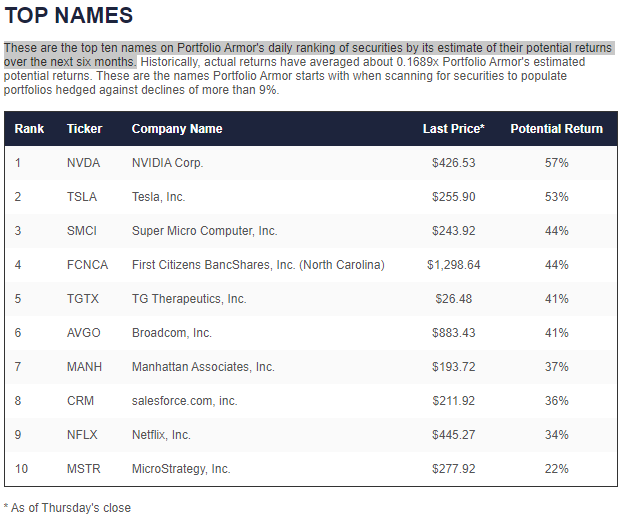A Smarter Trump Strategy On Ukraine

Whistling Past The Graveyard On The Ukraine War
In a National Journal post shared by Zero Hedge yesterday ("What Donald Trump's Ukraine Strategy Could Look Like"), former Trump staffers Lt. Gen. Keith Kellogg (Ret.) and Dan Negrea offered their take on what a Trump-brokered deal to end the Russia-Ukraine War could look like. After suggesting Trump could exert pressure on Putin by threatening to give Zelensky even more aid, they conclude:
A ceasefire along the current lines and subsequent negotiations would preserve a sovereign, democratic Ukraine anchored in the West and capable of defending itself. Kyiv would maintain its internationally-recognized claims to sovereignty over all of Ukraine. A halt to hostilities would also facilitate the provision of reliable security guarantees, including possible NATO and EU membership, to deter Russia from resuming the conflict. While less satisfying than (what increasingly appears to be an unachievable) total military victory, this outcome would represent a strategic defeat for Russia and a strengthening of American national security and the Western alliance.
Trump should have these two former staffers read The Art Of The Deal, or better yet, not include them in his administration, should he win next year. Let's look at where these two went wrong.
Why Would Russia Agree To This?
Crimea, for example, is mostly Russian ethnically, and was part of Russia from the time Catherine The Great won it from the Ottoman Empire in 1783 until 1954, when Soviet Premier Nikita Khrushchev transferred it from the Russian SSR (Soviet Socialist Republic) to the Ukrainian SSR. After the fall of the USSR, Russia initially allowed Ukraine to keep Crimea, since the two post-Soviet countries weren't in conflict, and Ukraine had agreed to lease Sevastopol, the home port of Russia's Black Sea Fleet, to Russia. Russia only annexed Crimea in 2014, after a U.S.-supported color revolution ousted the elected President of Ukraine, threatening Russia's continued access to Sevastopol. Russia will never concede Crimea, and Ukraine doesn't have the power to take it militarily. Maintaining the pretense that Crimea should be sovereign Ukrainian territory despite that is a recipe for continued conflict. It's also hypocritical in light of America's policy on Taiwan, where we ignore China's "internationally-recognized claims to sovereignty".
A Realistic Assessment Of America's Leverage Here
We have complete leverage over the Ukrainian government, as they are entirely dependent on U.S. assistance to continue to fight this war. We have far less leverage over Russia, and the leverage we do have isn't in threatening to give more aid to Ukraine. Even if there were political agreement to do so in the U.S., it's not clear we could give significantly more weaponry to Ukraine than we already have, partly due to manufacturing constraints, and partly due to fears that advanced weapon systems might fall into Russian hands.
Russia, in contrast, is almost entirely self-sufficient in arms manufacturing, and in the raw materials required to make them, as it is one of the world's largest producers of steel, coal, oil, and other inputs.
The real leverage the U.S. has over Russia is on the carrot side, not the stick side. We've pretty much used up all of our sticks. What we could do is offer to end U.S. sanctions on Russia, and give them back their frozen dollar assets.
What A Real Peace Deal Would Look Like
If the goal is actual peace, rather than a frozen conflict, the deal would look something like this:
- Russia agrees to pay Ukraine for the four oblasts it annexed, and in return, the U.S. and Ukraine recognize Russia's sovereignty over those regions. This would be similar to what the U.S. did with Mexico to settle the Mexican-American War in the Treaty of Guadalupe Hidalgo.
- Russia recognizes Ukraine's sovereignty over the rest of Ukraine.
- Ukraine agrees to remain neutral, and not host any NATO personnel or equipment.
- The U.S. agrees that it won't invite Ukraine to join NATO.
- Both sides release all POWs.
- The U.S. lifts all sanctions on Russia and releases its frozen assets. Russia drops any reciprocal sanctions on the U.S.
Time Is Not On Ukraine's Side
If the peace deal sketched out above seems generous to Russia, consider that the longer this war goes on, the greater the likelihood is that Ukraine will end up with something worse. Time is not on Ukraine's side, as support for it in the U.S. weakens, and its available manpower to continue fighting declines.
- Ukrainians say they are losing 20k personnel per month
— Big Serge ☦️🇺🇸🇷🇺 (@witte_sergei) December 20, 2023
- General Hodges says they need to draft women and hunt down expats
- 1944 Germany held up as a positive example of war making
Things are going well. https://t.co/rirWmIksL7
It's possible that the U.S. has already started negotiating with Russia, as journalist Kit Klarenberg suggested yesterday.
An hour and a half ago, a Russian "Special Flight Squadron" plane landed in Washington DC. They are used by Kremlin officials. It set out from St. Petersburg. You do the math. pic.twitter.com/aktU7N5Hc3
— Kit Klarenberg (@KitKlarenberg) December 20, 2023
Another Small Poker Player With No Cards
Klarenberg ended his thread above by quoting a post by the last post-Soviet leader the U.S. backed in a losing war with Russia, Georgia's Mikheil Saakashvili:
As every "the war is over" light flashes, recall Kissinger's view of Mikheil Saakashvili, another US proxy who got fucked: "A small poker player coming to the table with big players without cards." Of course Z is seen in the same terms by Washington now.https://t.co/GLkj0hpLEn
— Kit Klarenberg (@KitKlarenberg) December 20, 2023
Let's wrap this up with couple of quick follow-ups on yesterday's post.
Two Quick Follow-Ups
1) In yesterday's post (Death And Destruction In Gaza), we mentioned we were going to place two earnings trades on companies reporting Thursday. One of those two doesn't report until after the close, so it's still possible for you to place that trade, if you like. We just exited the first trade for a gain of 44%.
2) In yesterday's post, we also wrote that our system seemed to have anticipated the Powell Pivot with its security selection. Here's another example. On June 15th, we posted our top ten names for that date on our trading Substack (Top Names, 6/15/2023). They included the bitcoin hoarder MicroStrategy (MSTR).
Screen capture via Portfolio Armor on 6/15/2023.
Here's how that top ten performed over the next six months. On average, they were up 19.14%, versus 7.25% for SPY.
If you'd like a heads up when we post today's top ten, feel free to subscribe to our trading Substack/occasional email list below.
If You Want To Stay In Touch
You can scan for optimal hedges for individual securities, find our current top ten names, and create hedged portfolios on our web app. You can also follow Portfolio Armor on Twitter here, or become a free subscriber to our trading Substack using the link below (we're using that for our occasional emails now).



